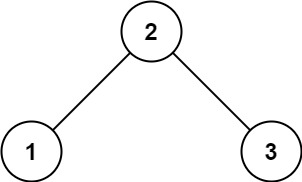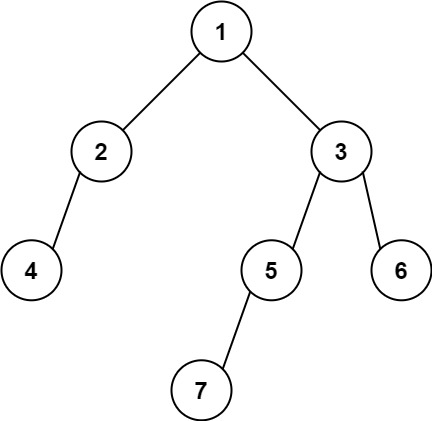Given the root of a binary tree, return the leftmost value in the last row of the tree.
Example 1:

Input: root = [2,1,3] Output: 1
Example 2:

Input: root = [1,2,3,4,null,5,6,null,null,7] Output: 7
Constraints:
- The number of nodes in the tree is in the range
[1, 104]. -231 <= Node.val <= 231 - 1
A:
递归, 找出高度,然后对比看看左子树的是不是这个高度。
如果是,则只需要看左子树。否则看右子树
/**
* Definition for a binary tree node.
* struct TreeNode {
* int val;
* TreeNode *left;
* TreeNode *right;
* TreeNode() : val(0), left(nullptr), right(nullptr) {}
* TreeNode(int x) : val(x), left(nullptr), right(nullptr) {}
* TreeNode(int x, TreeNode *left, TreeNode *right) : val(x), left(left), right(right) {}
* };
*/
class Solution {
public:
int findBottomLeftValue(TreeNode* root) {
return helper(root, getHeight(root));
}
private:
int helper(TreeNode* root, int height){
if(height == 1)
return root->val;
int leftHeight = getHeight(root->left);
if(leftHeight == height -1){
return helper(root->left, height-1);
}else{
return helper(root->right, height-1);
}
}
int getHeight(TreeNode* root){
if(!root)
return 0;
return 1 + max(getHeight(root->left), getHeight(root->right));
}
};
但是上面的解法time 效率不好
************下面是 迭代解法。 beat 100%***************
class Solution {
public:
int findBottomLeftValue(TreeNode* root) {
vector<TreeNode*> V{root};
int idx = 0;
while(idx < V.size()){
if(V[idx]->right){
V.push_back(V[idx]->right);
}
if(V[idx]->left){
V.push_back(V[idx]->left);
}
idx++;
}
return V.back()->val;
}
};
No comments:
Post a Comment